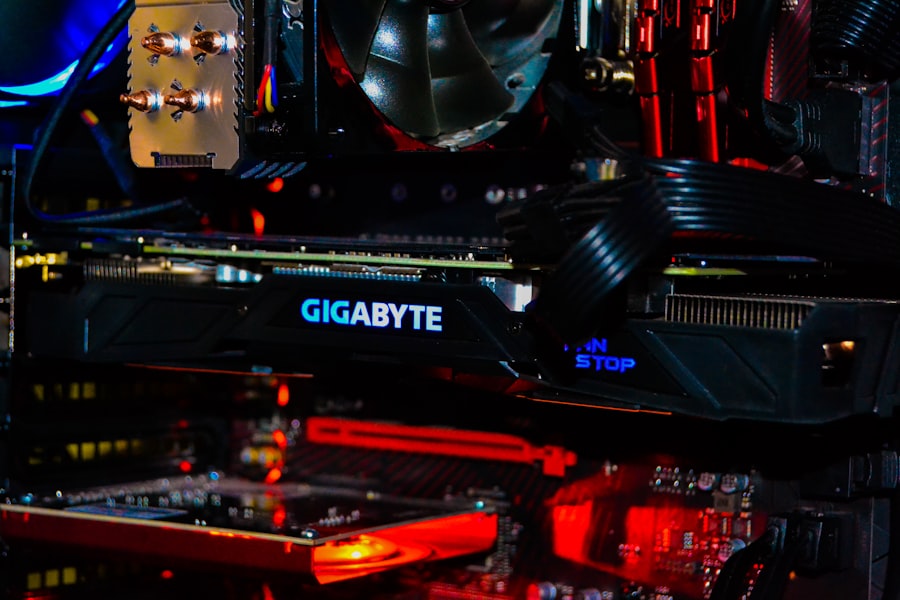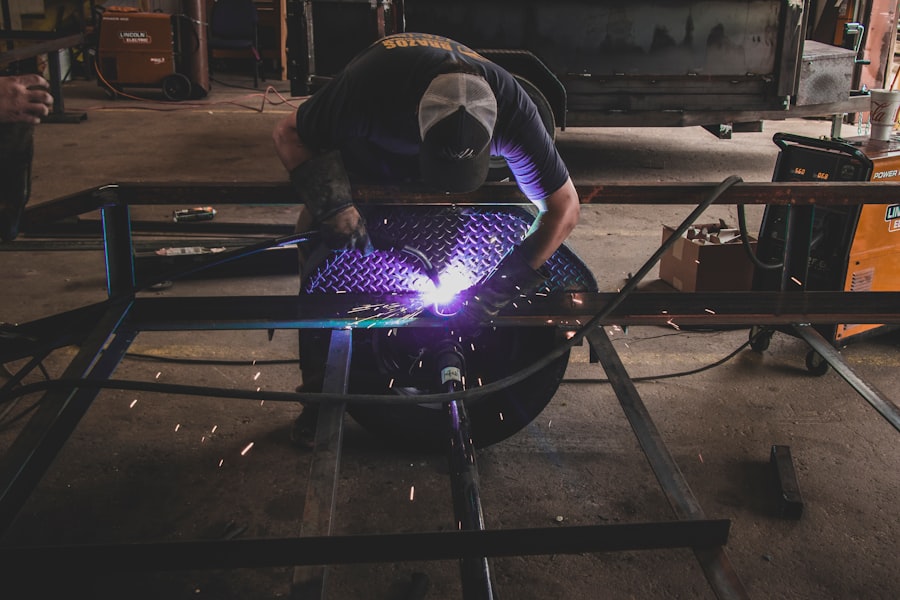Laser hair removal is a popular cosmetic procedure that utilizes concentrated beams of light to target and eliminate unwanted hair. The process works by emitting a specific wavelength of light that is absorbed by the pigment in the hair follicles. This absorption generates heat, which damages the follicle and inhibits future hair growth.
As you consider this treatment, it’s essential to understand how it works and what to expect during your sessions. During a typical session, a trained technician will apply a cooling gel to your skin to protect it and enhance the effectiveness of the laser. You may be given protective eyewear to shield your eyes from the bright light emitted by the laser.
The sensation during treatment can vary; some people describe it as a slight snapping or tingling feeling, while others may find it more uncomfortable. The duration of each session depends on the size of the area being treated, ranging from a few minutes for small areas like the upper lip to over an hour for larger areas like the back or legs.
Key Takeaways
- Laser hair removal targets hair follicles with concentrated light to inhibit future hair growth
- Shave the treatment area before the appointment and avoid sun exposure to prepare for laser hair removal
- Research and choose a reputable and experienced laser hair removal provider for safe and effective treatment
- Follow the recommended treatment schedule and avoid plucking or waxing between sessions for optimal results
- Keep the treated area clean and moisturized, and avoid sun exposure to manage post-treatment care
Preparing for Laser Hair Removal
Preparation is key to ensuring a successful laser hair removal experience.
This information will help them determine if you are a suitable candidate for the procedure.
It’s also important to avoid sun exposure and tanning products for at least two weeks prior to your treatment, as tanned skin can increase the risk of complications and reduce the effectiveness of the laser. In addition to avoiding sun exposure, you should refrain from waxing, plucking, or electrolysis for at least four weeks before your session. These methods remove hair from the follicle, which is counterproductive to laser hair removal, as the laser needs to target the hair in its growth phase.
Shaving is typically recommended just before your appointment, as it leaves the hair shaft intact while removing the surface hair that could cause discomfort during treatment. By following these guidelines, you can help ensure that your skin is in optimal condition for the procedure.
Choosing the Right Laser Hair Removal Provider

Selecting a qualified provider for your laser hair removal is crucial for achieving safe and effective results. Start by researching clinics in your area and looking for those with certified professionals who specialize in laser treatments. Check online reviews and testimonials from previous clients to gauge their experiences and satisfaction levels.
A reputable provider will be transparent about their qualifications, experience, and the technology they use. During your initial consultation, don’t hesitate to ask questions about the equipment they use and their approach to treatment. Different lasers are designed for various skin types and hair colors, so it’s essential to ensure that your provider has access to the right technology for your specific needs.
Additionally, inquire about their safety protocols and how they handle potential side effects or complications. A knowledgeable provider will take the time to address your concerns and help you feel comfortable with your decision.
Optimizing Your Treatment Plan
| Treatment Plan | Metrics |
|---|---|
| Medication | Dosage, Frequency, Adherence |
| Therapy | Sessions attended, Progress made |
| Lifestyle Changes | Exercise, Diet, Sleep patterns |
| Side Effects | Severity, Management strategies |
To achieve the best results from your laser hair removal sessions, it’s important to develop a personalized treatment plan tailored to your unique needs. Factors such as your hair color, skin type, and hormonal influences can all impact how effectively the laser targets your hair follicles. Your provider will assess these factors during your consultation and recommend an appropriate number of sessions based on your individual goals.
Typically, multiple sessions are required to achieve optimal results, as hair grows in cycles and not all hairs are in the same growth phase at any given time. Most people require between six to eight sessions spaced several weeks apart to achieve significant hair reduction. Your provider may also suggest adjustments to your treatment plan based on how your skin responds after each session.
By staying engaged in this process and communicating openly with your provider, you can optimize your results and enjoy smoother skin.
Managing Post-Treatment Care
After undergoing laser hair removal, proper post-treatment care is essential for minimizing side effects and ensuring effective results. Immediately following your session, you may experience some redness or swelling in the treated area, similar to a mild sunburn. Applying a soothing aloe vera gel or cold compress can help alleviate discomfort and reduce inflammation.
It’s also advisable to avoid hot showers, saunas, or strenuous exercise for at least 24 hours post-treatment to prevent further irritation. In the days following your session, you should keep an eye on any changes in your skin. It’s normal for treated hairs to shed over the course of a week or two after treatment; however, if you notice any unusual symptoms such as excessive swelling, blistering, or signs of infection, contact your provider immediately.
Additionally, remember to apply sunscreen diligently on treated areas when exposed to sunlight, as your skin may be more sensitive after treatment.
Utilizing At-Home Hair Removal Devices

Supplementing Professional Treatments with At-Home Devices
While professional laser hair removal offers long-lasting results, some individuals may choose to supplement their treatments with at-home hair removal devices. These devices have become increasingly popular due to their convenience and affordability.
Understanding the Limitations of At-Home Devices
However, it’s important to understand that at-home devices typically use lower energy levels than those used in professional settings, which may result in less effective outcomes.
Choosing the Right At-Home Device
If you decide to invest in an at-home device, research thoroughly to find one that is reputable and suitable for your skin type and hair color. Many devices come with built-in safety features and skin tone sensors that help ensure safe usage.
Using At-Home Devices Effectively
While these devices can be a helpful addition to your hair removal routine, they should not replace professional treatments entirely if you are seeking significant hair reduction.
Incorporating Hair Growth Inhibitors
In addition to laser hair removal and at-home devices, incorporating hair growth inhibitors into your routine can further enhance your results. These products work by slowing down the growth of hair follicles and can be used in conjunction with laser treatments for optimal effectiveness. Many over-the-counter options are available, including creams and lotions that contain active ingredients designed to inhibit hair regrowth.
When selecting a hair growth inhibitor, look for products that have been clinically tested for safety and efficacy. It’s also wise to consult with your provider before starting any new products, as they can recommend options that complement your treatment plan. By integrating these inhibitors into your regimen, you can enjoy smoother skin for longer periods between treatments.
Maintaining Long-Term Results
Achieving long-term results from laser hair removal requires ongoing commitment and care. While many individuals experience significant hair reduction after completing their initial treatment sessions, some may require maintenance treatments every six months or annually to keep unwanted hair at bay. Staying proactive about scheduling these follow-up appointments will help ensure that you maintain smooth skin over time.
In addition to regular maintenance sessions, adopting a healthy lifestyle can also contribute to long-lasting results. Staying hydrated, eating a balanced diet rich in vitamins and minerals, and managing stress levels can all positively impact your skin health and overall well-being. By prioritizing self-care and remaining consistent with both professional treatments and at-home care strategies, you can enjoy the benefits of laser hair removal for years to come.
In conclusion, understanding the intricacies of laser hair removal—from preparation through post-treatment care—can empower you to make informed decisions about this popular cosmetic procedure. By choosing a qualified provider, optimizing your treatment plan, and incorporating additional strategies like at-home devices and hair growth inhibitors, you can achieve smooth skin that lasts long-term. Embrace this journey with confidence as you take steps toward achieving your desired aesthetic goals.
If you’re looking to make your laser hair removal sessions go faster, you may want to check out this article on how to prepare for laser hair removal. This article provides tips on how to get the most out of your treatment and ensure that the process is as efficient as possible. By following these guidelines, you can help speed up the process and achieve smoother, hair-free skin in less time.
FAQs
What is laser hair removal?
Laser hair removal is a cosmetic procedure that uses a concentrated beam of light (laser) to remove unwanted hair. The laser targets the pigment in the hair follicle, damaging the follicle and inhibiting future hair growth.
How does laser hair removal work?
During laser hair removal, the laser emits a light that is absorbed by the pigment in the hair follicles. This damages the follicle and inhibits future hair growth. Multiple sessions are usually required to achieve long-term hair reduction.
How can I make laser hair removal go faster?
To make laser hair removal go faster, it is important to follow the recommended treatment schedule and avoid prolonged periods between sessions. Additionally, ensuring that the hair is shaved before each session can help the laser target the hair follicles more effectively.
Are there any factors that can affect the speed of laser hair removal?
Yes, several factors can affect the speed of laser hair removal, including the individual’s skin and hair type, the area being treated, and the expertise of the technician performing the procedure. Additionally, adherence to the recommended treatment schedule and proper aftercare can impact the speed of results.
What are the potential risks and side effects of laser hair removal?
Potential risks and side effects of laser hair removal may include temporary discomfort, redness, swelling, and changes in skin pigmentation. In rare cases, blistering, scarring, or infection may occur. It is important to discuss potential risks with a qualified practitioner before undergoing laser hair removal.



